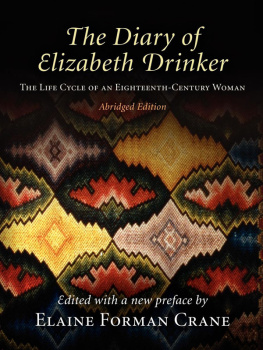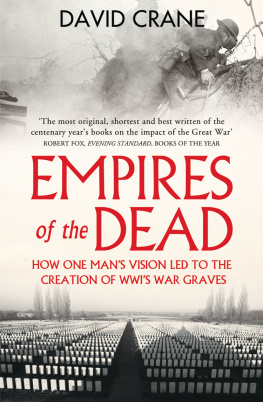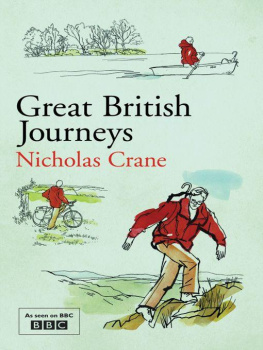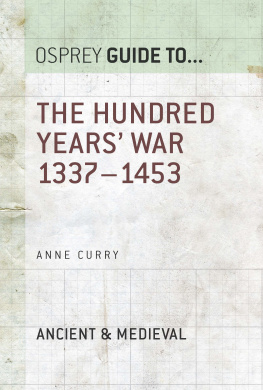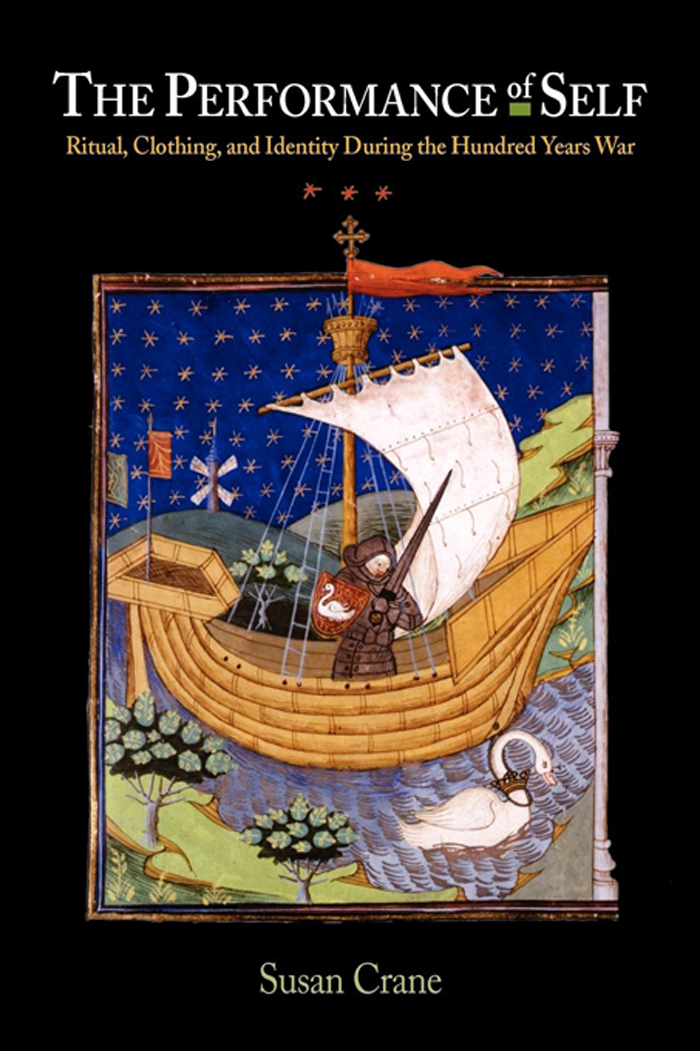The Performance of Self
THE MIDDLE AGES SERIES
Ruth Mazo Karras, Series Editor
Edward Peters, Founding Editor
A complete list of books in the series
is available from the publisher.
The Performance of Self
Ritual, Clothing, and Identity
During the Hundred Years War
Susan Crane

University of Pennsylvania Press
Philadelphia
Copyright 2002 University of Pennsylvania Press
All rights reserved
Printed in the United States of America on acid-free paper
10 9 8 7 6 5 4 3 2 1
Published by
University of Pennsylvania Press
Philadelphia, Pennsylvania 191044011
Library of Congress Cataloging-in-Publication Data
Crane, Susan.
The performance of self : ritual, clothing, and identity during the Hundred Years War /
Susan Crane.
p. cm. (Middle ages series)
Includes bibliographical references (p. ) and index.
ISBN 0-8122-3658-0 (cloth : alk. paper)
ISBN 0-8122-1806-X (paper : alk. paper)
1. Hundred Years War, 13391453Social aspectsGreat Britain. 2. Identity
(Psychology)Great BritainHistoryTo 1500. 3. Hundred Years War, 13391453
Social aspectsFrance. 4. CostumeGreat BritainHistoryMedieval, 5001500.
5. Identity (Psychology)FranceHistoryto 1500. 6. CostumeFranceHistory
Medieval, 5001500. 6. RitualGreat BritainHistoryTo 1500. 7. RitualFrance
HistoryTo 1500. 8. Great BritainSocial life and customs10661485. 9. Great
BritainCourt and courtiers
HistoryTo 1500. 10. FranceCourt and courtiersHistoryTo 1500. 11. FranceSocial life and customs13281600.
DA185 .C89 2002
306.0941 21
2002018727
Contents
Illustrations
Figures
Plates (follow p. 106)
A Note on Citations
English translations are provided for all citations from other languages. Translations from medieval texts are my own unless otherwise noted. In quotations from medieval texts, I have followed the modern distinctions between i and j and between u and v. Where they have become conventional, I use English forms for some French names, such as John the Fearless and Joan of Arc. I cite scholarly works published translations in English whenever I am aware of them. Where the original publication of a scholarly work preceded its translation into English by more than ten years, the original date is provided in brackets in the bibliography.
Introduction
My target is a medieval courtier who is behaving strangely. What can she mean by dressing in leaves and flowers on the first of May? Why does he disguise himself as a wild man to interrupt a wedding feast? At such moments, self-conception intersects with self-presentation, and behavior conveys something of how courtiers inhabited their social identities. What these courtiers say about themselves could be seen as extraneous to their behavior, but I take their words as a functional part of their behavior, a component of their performances that should not be isolated from the material register. Conjoining these registers brings out complexities in medieval self-conception that may seem alien now, complexities that tend to be ignored in histories of self-consciousness. Yet scholars, except perhaps for the most traditional Cartesians, are in agreement that self-conception is profoundly shaped by cultural and material conditions. We should expect people to understand and perform themselves differently from place to place and time to time. By attending to place, time, and performance together, I mean to apprehend secular identities in their specifically courtly and medieval aspects.
My premise that identity is both material and conceptual dictates a range of sources from lyric poetry to household accounts to chronicles and beyond. It might be objected that my evidence recovers not vanished performances but merely their textual vestiges. A chronicles account of a courtiers disguising offers only mediated access to a historical moment, but its very mediationsits explanations of the behavior, its economy of representation, its judgmentsconstitute a generically shaped discourse of identity. Similarly, a lyric poem about May cannot record whether historical women accepted the poetic trope that they were daisies, but it can demonstrate the tropes place in a complex of ideas about courtly identity that Maying was said to enact. Wardrobe accounts provide another kind of information about the purposes of Maying, as they detail which emblems are embroidered on May garments and who wears a lords livery for the festival. All these texts are at some remove from historical performance itself, but they do articulate contemporary understandings of courtly performance and its meanings. Moreover, the very distinction between performance and texts is specious, insofar as performance is itself grounded in conventions. Literary characters express chivalric commitment through the poetics of a genre; historical knights are similarly engaged in a rhetoric of appearances. It is on this citational plane of performance that historical and literary instances of chivalric behavior meet and influence one another.
Late medieval courts are architectural spaces, institutions, and social groups that assert their separateness and superiority to the wider world, and claim in consequence an array of privileges and powers that further set them apart. Castle building was an important form of social display, and licenses to crenellate were eagerly sought, even in peacetime, because of the tradition that aristocratic power derives from armed might. In provincial castles and halls, the term court is generally less appropriate than the term household to describe the institutional nature of a relatively small assembly of people in varied ranks who serve a gentle family and maintain its property; even in the large courts of kings and lords from which my examples tend to be drawn, the household is a more visible and documented institutional formation than the group of social peers I call courtiers. Late medieval courtiers constitute themselves especially by staging their distinctiveness: their feasts, tournaments, entries, and weddings define their peculiarly elite splendor, generosity, power, and lineage. The value of the term court for my study, which concentrates on social relations, is that the term encompasses architectural and organizational meanings as well, recalling that the successful court event mobilizes an appropriate setting and a specialized administration, as well as its elite participants. One of the courts I discuss, the ecclesiastical court of Rouen that tried Joan of Arc for heresy, differs from the others in its religious agenda but shares with the others a group of peers, a locus, and an administrative arm that together ritualize an important moment, soliciting a public performance of identity and recording it with care.
I concentrate on courts in part because of the wealth of documentation that is available about them, but also in order to extend the perspectives of cultural studies from the familiar terrain of how power speaks to the oppressed to the less familiar question of how power speaks to itself: how elites understand ideologies that are intrinsic to their authority, and how they manage or fail to manage their intramural conflicts. These elites wrote relatively little about their secular self-conception, and scholars have followed their lead. Michel Foucault is not at his most revisionist in declaring the discourse of penance to be the medieval technology of the but their focus on written articulations does not tend to encompass the richly significant performances that accompany courtiers assertions about identity.


